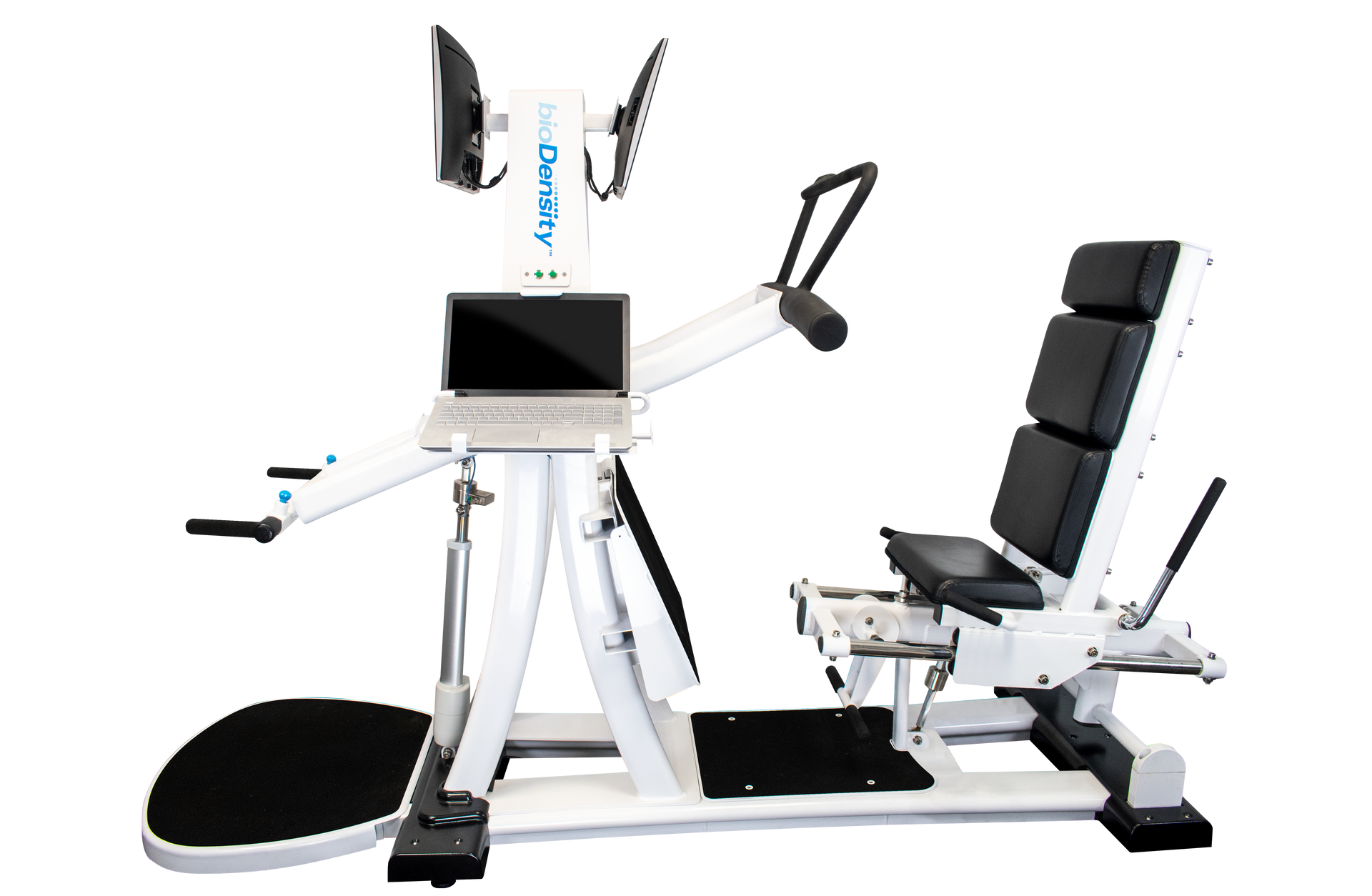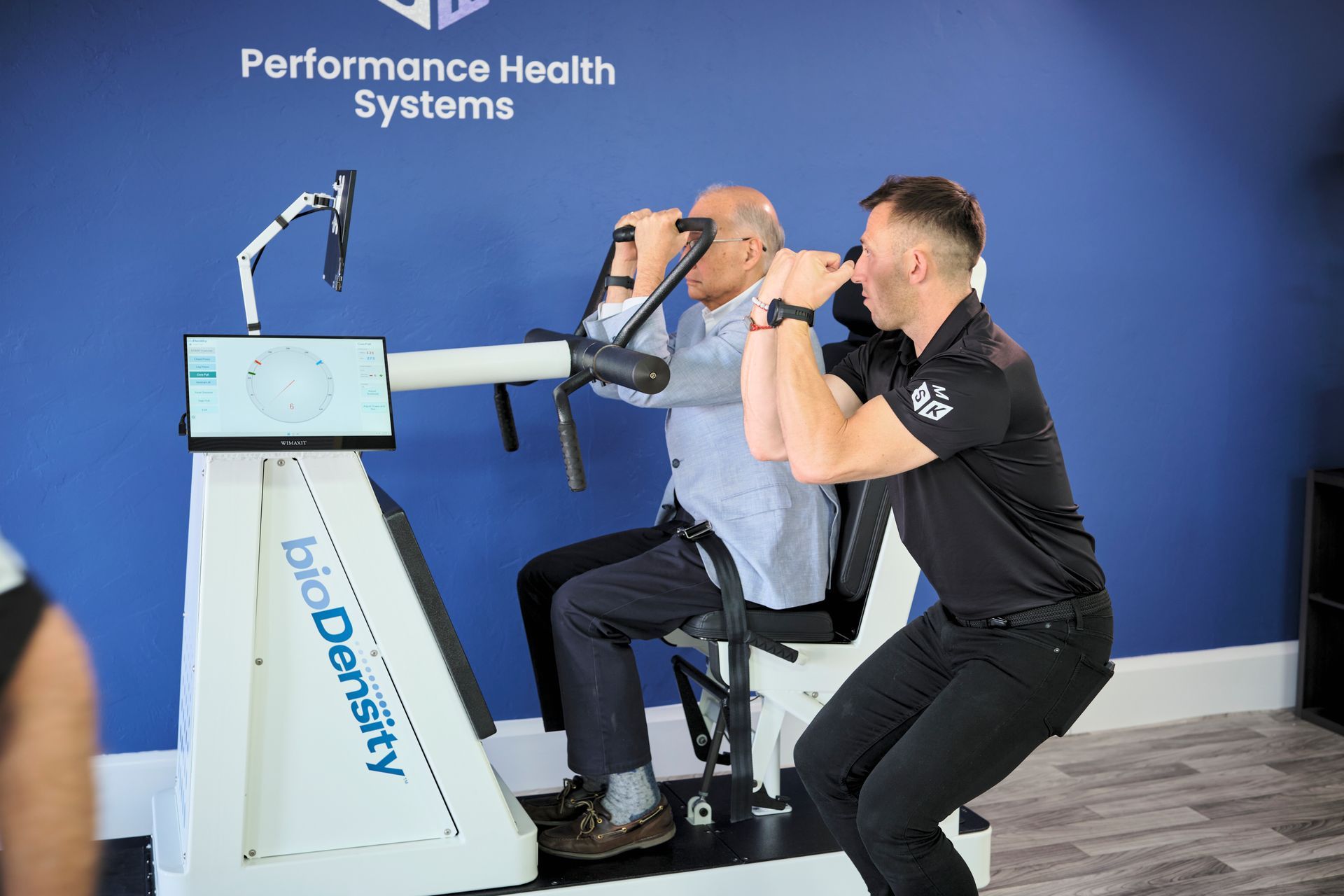bioDensity™
The bioDensity™ machine is designed to enhance bone density, muscular strength, and overall health through a non-pharmaceutical, biomechanical approach.
How BioDensity™ Works?
1. Mechanical Stimulation
The bioDensity™ machine provides a platform for performing four key movements—chest press, leg press, core pull, and vertical lift. These exercises involve pushing or pulling against resistance in a way that is tailored to the user's capabilities
2. Osteogenic Loading
bioDensity™ machine utilises osteogenic loading, which means it applies brief and intense loads to the musculoskeletal system. This kind of mechanical load is crucial in stimulating bone growth and improving bone density.
3. Safety and Accessibility
bioDensity™ is designed to allow users to exert maximal force in a controlled and safe environment, making it accessible for people of various ages and physical capabilities, including those with limitations or at risk of osteoporosis.
4. Measurement and Feedback
bioDensity™ provides immediate feedback on the force exerted, which helps in tracking progress and setting goals. This feedback mechanism can motivate users to improve their performance over time.
Boost
Bone Strength Safely
The bioDensity™ machine aims to safely aid in increasing bone density, strength, and overall musculoskeletal health through a controlled and measurable physical engagement.

Our Blog: BioDensity


